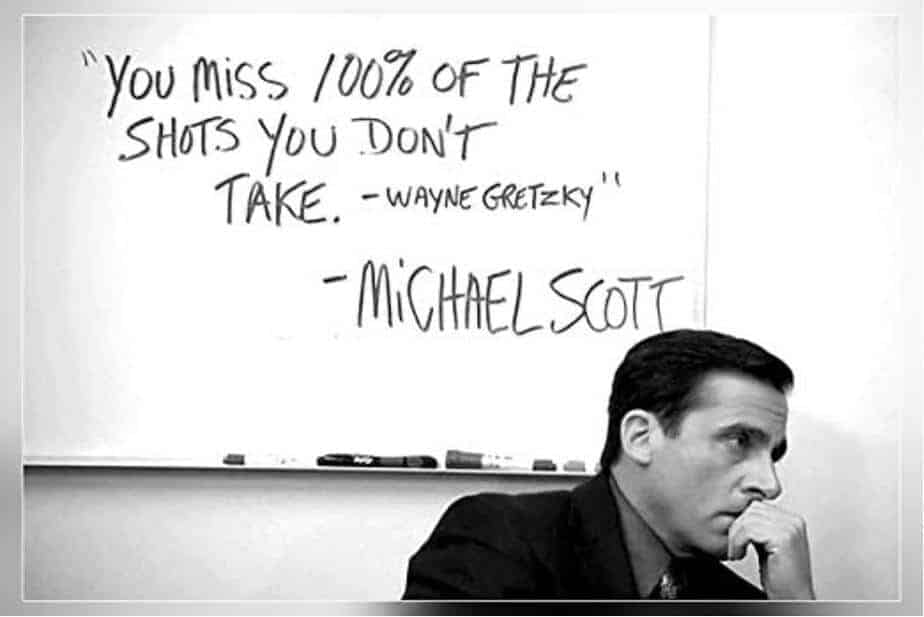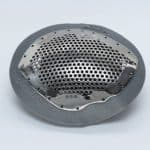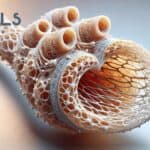
Matt Lemay is a part of Autodesk’s Fusion 360 team – focused on ensuring customer success in the adoption of Generative Design & Additive Manufacturing. Before joining Autodesk 4 years ago, Matt was an application engineer in the Aerospace Composites industry and a design engineer for Additively Manufactured surgical implant technology. At Autodesk, Matt partners with enterprise Aerospace, Automotive, and Heavy Equipment manufacturers to drive innovation with Generative Design & Additive Manufacturing. Matt has also been involved with the Autodesk Pro Bono program, specifically around projects related to Additive Manufacturing and non-profit medical projects – Granta, low-cost Cranial Implant Manufacturing (Mexico) & Nia Technologies, 3D Printed prosthetics (Uganda). Matt will be speaking at the upcoming event in Boston “Design for Healthcare 3D Printing and Bioprinting”.
Jenny: When was the first encounter you had with 3D printing?
Matt: One of my first jobs out of college was at Conformis, a leader in patient-specific implant technology. The excitement and opportunity that 3D Printing enabled were clear immediately:
- Better patient outcomes through tailored designs made for each customer’s anatomy? Check!
- Just-in-time Manufacturing allowing for better supply chains and lower prices? Check!
- Reduced waste and better manufacturing sustainability? Check!
Jenny: What inspired you to start your journey in 3D printing ?
Matt: The opportunity to address the needs of MORE demand with BETTER outcomes while using LESS waste is what inspires me with 3D Printing. As we look towards the future there are 7.5 Billion people on Earth today, by 2050, that number will reach 10 Billion. All of these people will need communication, transportation, food, houses, bridges, roads, etc.. This will require an estimated 370k+ new product introductions per year to match this demand! More of everything is inevitable.
Yet, at the same time, we see shortages. Whether it be shortages in natural resources or in skilled workers. We are also nowhere near as efficient as we believe – 70% of all spare parts are never used, they sit in stock and are wasted. While more demand is inevitable, fewer resources to address this need is also a reality. This requires us to rethink how we design and manufacture the products of tomorrow and require us to be BETTER. 3D Printing is one of the ways to do this.

Jenny: Who inspired you the most along this journey in 3D printing ?
Matt: Dr. Carlos Monroy (CEO of Granta) http://www.granta.mx/la-empresa/. Dr. Monroy and I worked together on a pro bono project for patient-specific cranial implant design and manufacturing for his non-profit, Granta. Dr. Monroy’s passion and expertise in creating better patient outcomes and changing lives is my inspiration.

Jenny: What motivates you the most for your work?
Matt: The excitement of disrupting an industry and driving revolutionary results – either for patients, consumers, or manufacturers.
Jenny: What is/are the biggest obstacle(s) in your line of work? If you have conquered them, what were your solutions?
Matt: The natural tendency of many to stick to “what works” as opposed to taking risks and revolutionizing their processes.

Jenny: What do you think is (are) the biggest challenge(s) in 3D Printing? What do you think the potential solution(s) is (are)?
Matt: Making the business case and economics work. 3D Printing can still be considerably more expensive than traditional manufacturing techniques and only works when many of the potential benefits are realized. Generative Design technology like Fusion 360, which has the ability to compare designs created for multiple manufacturing options and compare the estimated cost – can solve that problem.
Jenny: If you are granted three wishes by a higher being, what would they be?
Matt: Wish #1a – more wishes (is that allowed?)
Wish #1b – accessible and excellent healthcare for everyone
Wish #2 – better sustainability in the use of Earth’s resources
Wish #3 – education available to everyone

Jenny: What advice would you give to a smart driven college student in the “real world”? What bad advice you heard should they ignore?
Matt: Find what you are passionate about, and put everything you have into it! Never settle in your career for a role that doesn’t challenge, interest, or push you. Bad advice to ignore would be from those who say you need to only specialize and not be interdisciplinary. Engineering company’s need every type of person – purely technical, great communicators, customer advocates, business leaders, team managers. No matter what your skill set, the more diversity in talent and experience you can provide, the better.
Jenny: If you could have a giant billboard to promote a message to millions and even billions of people in our community, what message would that be?
Matt: Success in 3D Printing requires collaboration from everyone. We can’t win unless material, software, hardware, and product experts collaborate with the same goal in mind.
Jenny: What were/was the best investment you made in 3D printing/bio-printing?
Matt: Sometimes “best” doesn’t have to be judged monetarily. Buying my Dad a 3D Printer when he retired is my best investment. I started him off with a Monoprice Mini FDM and he now has 3.

Jenny: What was/is the biggest risk you took in your career?
Matt: Not learning about 3D Printing earlier! Along those lines, I would highly recommend MIT xPro’s Additive Manufacturing for Innovative Product Design online course as a great way for anyone to become an expert.
Jenny: What do you enjoy in your spare time? What are you passionate about outside of your work/3d printing?
Matt: Recently married and proud parent to one dog “child”. I am incredibly passionate about technology, sports, and anything competitive.
Jenny: What is your favorite quote? Why?

- “You miss 100% of the shots you don’t take – Wayne Gretzky” – Michael Scott
- Either as the original Wayne Gretzky quote or as the Michael Scott adaptation ?. This is the perfect representation of what’s needed in a career with learning new skills and talents. Can you ever be 100% sure learning any new skills will pay off? No, but it gives you a much better chance than not trying.
Jenny: What does the word “3DHEALS” mean to you? =)
Matt: 3DHEALS means applying digital engineering techniques and all its benefits to create better patient outcomes or to reach those in need who were never able to receive care through traditional methods.
Related Articles:
Interview with Professor Gustavo Mendonca




 Jan 10, 2020
Jan 10, 2020 






Comments